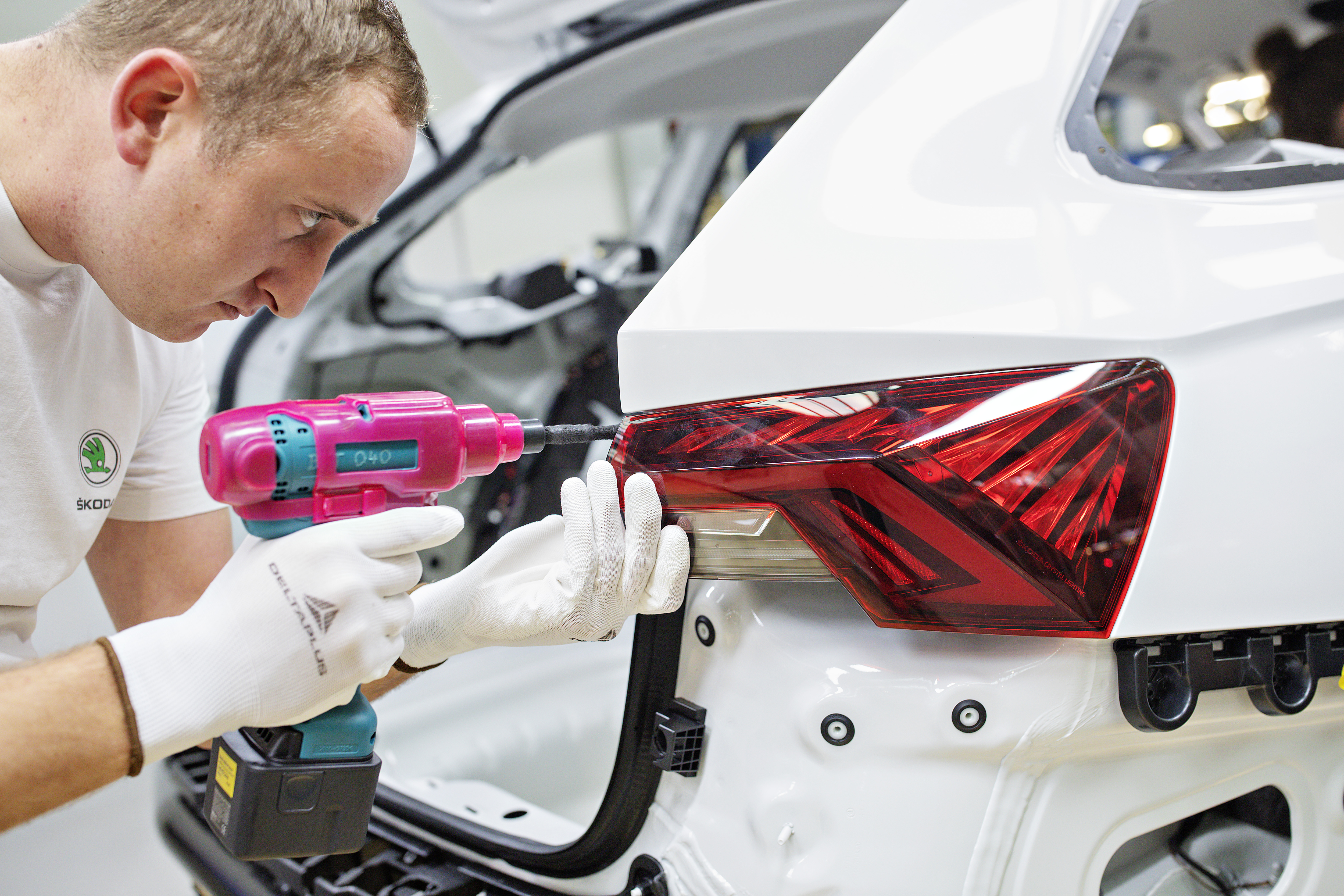Batteries and head-up displays
Even though flexibility on the OCTAVIA production line is nothing new, parallel MQB and MEB production required special modifications. In total, EUR 32 million was invested in these modifications, which took place from last summer. Despite this year’s complications caused by the Covid-19 pandemic, the production line was reorganised according to schedule.
“The biggest changes we made were in assembly, where the difference between combustion engine and electric car production is most noticeable. Here we had to cope with specific new MEB components linked to electric cars and with the overall greater weight of e-cars,” says Aleš Bureš. In line with the weight requirements, cycles were added on the assembly line and adjustments were made to chassis assembly. As well as this, a new work station for battery installation was created.
 In future, the brand will be manufacturing up to 350 units of the ENYAQ iV here every day in a fully flexible manner alongside the OCTAVIA and KAROQ series
In future, the brand will be manufacturing up to 350 units of the ENYAQ iV here every day in a fully flexible manner alongside the OCTAVIA and KAROQ series
For example, there are new technologies for handling heavy batteries, and the new work station for modifying head-up displays is another interesting addition. That’s because the ENYAQ iV is the first ŠKODA model with a new type of head-up display with a much larger projection surface and augmented reality features - this solution is therefore a lot more demanding in terms of production than the traditional head-up display.
Minor adjustments were also made to the load-bearing structure of the production shed itself. “We made small adjustments to some girders, but we had to perform a complete check of the building’s structural capacity reserves,” explains Aleš Bureš. During the alterations, the Czech carmaker paid great attention to safety, especially with regard to battery handling. ŠKODA also introduced extensive fire protection measures, including installing thermovision cameras that constantly monitor the temperature in the production shed and activate an alarm if the temperature ever deviates from a specified range.









































